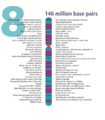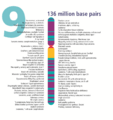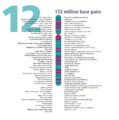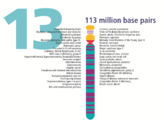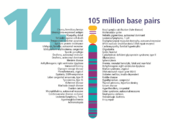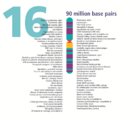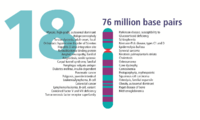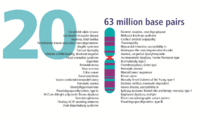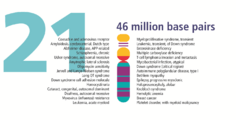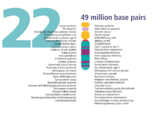Nuclear DNA facts for kids
Nuclear DNA is the special DNA found inside the cell nucleus of eukaryotic cells. Think of eukaryotic cells as the building blocks of plants, animals, fungi, and many other living things. This DNA looks like a twisted ladder, which scientists call a double helix. It has two long strands wrapped around each other. Francis Crick and James D. Watson first figured out this amazing double helix shape in 1953.
Contents
What Makes Nuclear DNA Special?
Nuclear DNA is different from the DNA found in tiny bacteria or in parts of a cell called mitochondria and plastids (like chloroplasts in plants). Here are some key differences:
- Length and Structure: Nuclear DNA is very long. It's carefully packed into structures called chromosomes. Chromosomes are made of DNA wrapped around special proteins.
- Two Copies: Most eukaryotic cells have two full sets of nuclear DNA. You get one set from your mother and one set from your father. This is why we say these cells are diploid, meaning "double."
- Other DNA: DNA in mitochondria and plastids is much shorter and shaped like a circle. These parts of the cell usually have only one set of their own DNA, which is called haploid. Scientists believe that mitochondria and plastids were once independent bacteria that became part of larger cells a long, long time ago. This idea is called endosymbiosis.
How Nuclear DNA Creates Variety
The fact that nuclear DNA comes in two sets is super important, especially for how living things reproduce.
- Shuffling Genes: Unlike mitochondrial or plastid DNA, which mostly changes only when a mutation happens, nuclear DNA gets shuffled around during a special type of cell division called meiosis. Meiosis is a key part of sexual reproduction.
- New Combinations: This shuffling means that when two parents have offspring, their children get a unique mix of genes from both. This creates a lot of variety among brothers and sisters, and within a whole species. It's why you don't look exactly like your parents or your siblings!
Controlling Cell Activities
Another cool thing about nuclear DNA is how it's controlled.
- Regulation: The instructions in nuclear DNA are not always "on." They are carefully regulated. This means that proteins and special RNA systems control when and how much of a gene's instructions are used.
- Adjusting to Needs: This control system helps the cell make just the right amount of different products it needs, depending on what's happening around it. It's like a dimmer switch for genes, allowing the cell to adjust to different situations.
Gallery
- The human nuclear DNA displayed into chromosome ideograms with label from Human Genome Project (1990-2003)







